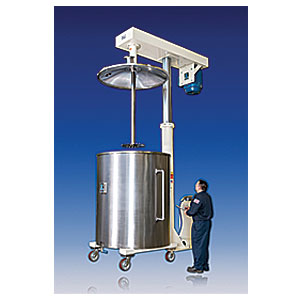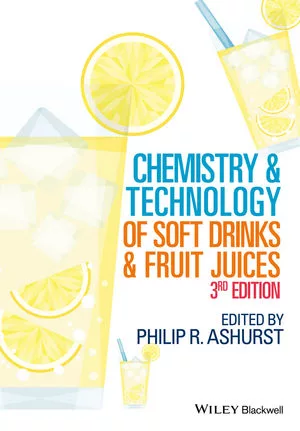High-, low-shear mixing helps blend varying ingredients
Processing automation helps boost blending efficiency
Blending ingredients and flavors are critical processes in the beverage industry. If the process is incomplete or even occasionally overly done, the end result will not be the quality expected, and the product can be wasted. The amount of processing also can vary based on the ingredients in the mix. Solubility also can vary for ingredients, impacting the potential need for automated mixing practices.
In addition, some long-chained organic compounds and powders can be difficult to mix. Long-chained organic compounds are very sensitive to mechanical mixing and must be carefully blended in order for them to hold up and accomplish their purposes in the final product. According to a scientific report by Silverson, Buckinghamshire, United Kingdom, long-chained molecules such as xanthan gum can be difficult to disperse in liquid and can give rise to problems such as:
- agglomeration
- increasing viscosity, which can make additions more difficult to disperse
- the need for longer mixing times, which in turn can degrade the gum
- unhydrated gum could hydrate in storage, which can impact the quality of the final product
- traditional mixing being ineffective.
To improve powder processing, there are a few choices on the market. Admix, Londonderry, N.H., published a video showing the use of its Rotosolve High Shear mixer completing a 2 percent and a
6 percent by volume mixture in five minutes with no agglomeration. In 2014, Admix expanded its Rotosolve portfolio with the release of Rotosolver II. The new product uses 30 percent less energy, improved dispersion by 10 percent, and features an easier to clean design, the company says.
Similarly, Charles Ross and Son Co., Hauppauge, N.Y., published a paper titled, “Mixing Technology Insight #242” that describes its solids/liquids injection manifold technology for combining such materials.
 A Ross Vacuum-rated High Speed Disperser can be used to incorporate dry powders into liquid and disperse loosely bound agglomerates. (Image courtesy of Charles Ross & Son Co.) |
Other times, high-shear mixing technology can be a solution, such as when working with emulsions. A high-shear blender can force the materials to form tiny particles that can stay suspended longer. For situations like this, Charles Ross and Son offers its 2,000-gallon Triple-Shaft Mixer. The mixer features a helical three-wing anchor agitator, a high-speed saw-tooth disperser blade, and a high-shear rotor/stator emulsifier for handling heavy-duty paste, gel, dispersion, suspension or slurry mixing under controlled temperatures. The helical domed cover includes flanged ports, spray balls, a resistance temperature detector thermoprobe and a 24-inch manway. The rest of the machine features a pneumatically operated sanitary discharge valve, dimpled 100-psig stainless steel jacket, and rotary vane vacuum pump. Rated for full vacuum operation as high as 29.5 inches of Hg, the Triple-Shaft Mixer is made of stainless steel 316L wetted parts polished to a 240-grit finish. The mixer is controlled from a 15-inch color touchscreen connected to a pre-programmed programmable logic controller.
The company also offers its Ross Vacuum-rated High Speed Dispersers that incorporate a specially designed blade to break up agglomerates. Primarily used to incorporate dry powders into liquid and disperse loosely bound agglomerates, the mixers are able to impart high levels of shear while producing vigorous flow and rapid turnover of low- to medium-viscosity dispersions as high as 50,000 centipoise, the company says. In most applications, the extent of deagglomeration is further optimized under vacuum conditions, which reveal tighter and more uniform particle size distributions in shorter cycle times, it says.
Beyond processing ingredients properly, technologies are available that can help a beverage-maker accomplish blending tasks efficiently. According to a video from Admix Inc., the company’s blenders have been able to reduce a batch blending cycle from 1 hour to less than 10 minutes, which is a time savings of 80 percent. This allows for more product to go out the door in less time and with less money, the company says.
Looking for a reprint of this article?
From high-res PDFs to custom plaques, order your copy today!



